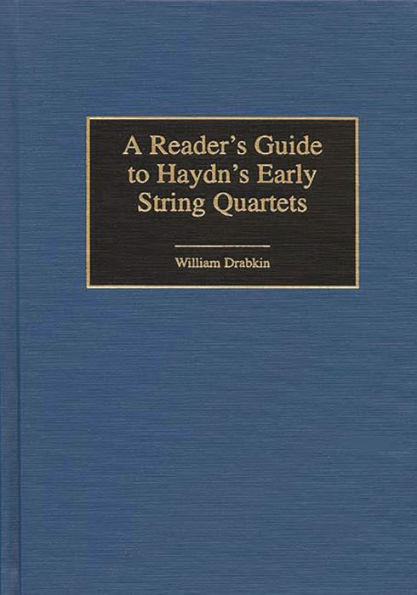A Reader's Guide to Haydn's Early String Quartets
The six string quartets comprising Joseph Haydn's Opus 20 (composed in 1772) are the first works in the genre to have received consistent critical attention from writers on music. The twenty-two quartets Haydn wrote before this date, though rarely discussed by historians and theorists and seldom performed in public, are nevertheless fundamental to the development of the quartet and thus inseparable from Opus 20 itself. This thoughtful discussion provides a basis upon which to study the quartet by showing how the relationship among the four players can best be understood as a musical dialogue. A methodology is developed for analyzing these quartets by focusing on the characteristics of string instruments that inform not only the style of the music, but also the materials of the composition. The changing relationships among the instruments reveal the level of sophistication evident in Haydn's early works and attest to the affinity these works have with his later masterpieces. Music scholars and educators will appreciate the generous musical examples and clear prose that explains the more detailed analysis of the Opus 20 set.
"1003356967"
A Reader's Guide to Haydn's Early String Quartets
The six string quartets comprising Joseph Haydn's Opus 20 (composed in 1772) are the first works in the genre to have received consistent critical attention from writers on music. The twenty-two quartets Haydn wrote before this date, though rarely discussed by historians and theorists and seldom performed in public, are nevertheless fundamental to the development of the quartet and thus inseparable from Opus 20 itself. This thoughtful discussion provides a basis upon which to study the quartet by showing how the relationship among the four players can best be understood as a musical dialogue. A methodology is developed for analyzing these quartets by focusing on the characteristics of string instruments that inform not only the style of the music, but also the materials of the composition. The changing relationships among the instruments reveal the level of sophistication evident in Haydn's early works and attest to the affinity these works have with his later masterpieces. Music scholars and educators will appreciate the generous musical examples and clear prose that explains the more detailed analysis of the Opus 20 set.
70.0
In Stock
5
1

A Reader's Guide to Haydn's Early String Quartets
200
A Reader's Guide to Haydn's Early String Quartets
200Hardcover
$70.00
70.0
In Stock

Product Details
| ISBN-13: | 9780313301735 |
|---|---|
| Publisher: | Bloomsbury Academic |
| Publication date: | 10/30/1999 |
| Series: | Reader's Guides to Musical Genres , #1 |
| Pages: | 200 |
| Product dimensions: | 6.14(w) x 9.21(h) x 0.50(d) |
| Lexile: | 1550L (what's this?) |
About the Author
From the B&N Reads Blog
